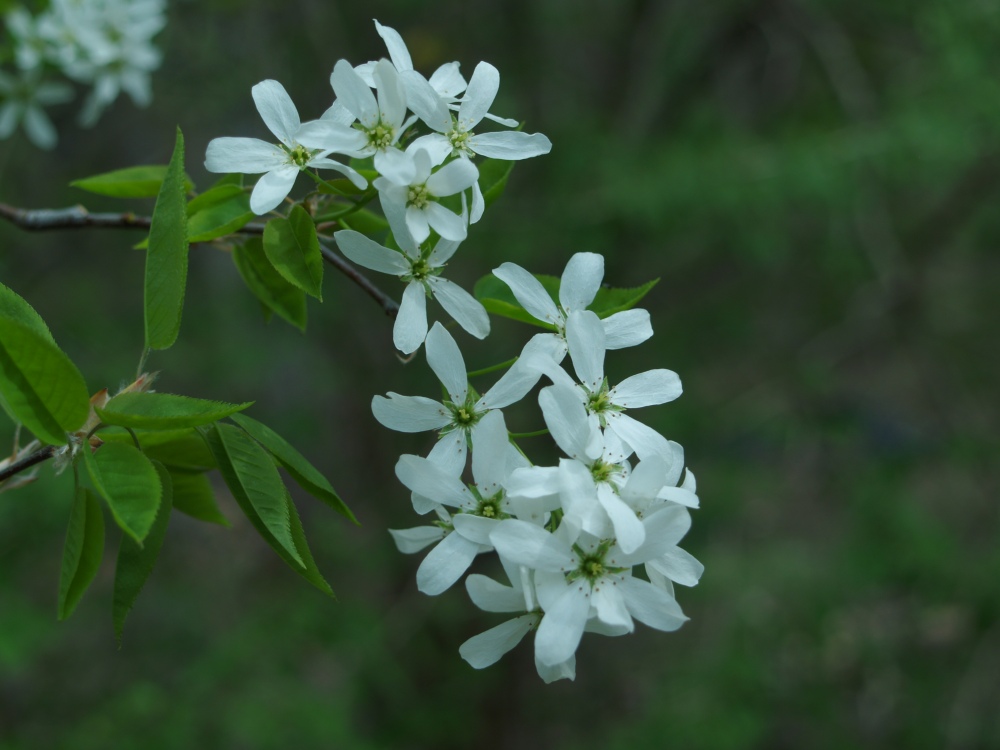What strange bedfellows this odd spring has arranged. After early cold, one flower is weeks late, while another arrives on schedule in the warmth of more recent days. And so, along roadsides in mid April are splendid white flowers that must be closely observed to discern if they are invasives, or natives.

First, in late March came the pears (Pyrus calleryana, above and below), seedlings of the ubiquitous ‘Bradford’ mostly, but also from ‘Chanticleers’ and ‘Aristocrats’, I suspect. Planting in local landscapes of the lovely, but vigorously invasive flowering tree has subsided, but the progeny live on, spreading along fence rows and highways, and in unmanaged meadows.

More recently, pears have been joined in flower at the forest’s edge by our native serviceberries (Amelanchier canadensis, below), which are equally beautiful but not so abundant. In this area of northwestern Virginia, pear seedlings greatly outnumber the serviceberries, which are not scarce, but are in no danger of being labelled invasive.

While the blooms are similar in appearance, the reliable test to identify pear and serviceberry is symmetry. The pear has it, the serviceberry doesn’t. If the tree’s branching is compact, it is a pear. Even at the wood’s edge the symmetry of the pear is apparent, which was a good part of its consumer appeal.

I can be grudging stubborn to jump on bandwagons, but I am on board with this one. While the branching of serviceberry is perhaps too unmannerly for some situations, it is a much more responsible choice for the garden. Perhaps a dogwood will be more appealing (the native, hybrids, or Chinese) or a redbud. The answer is not native or non-native to my thinking, but a good choice rather than a poor one.
They do take over!